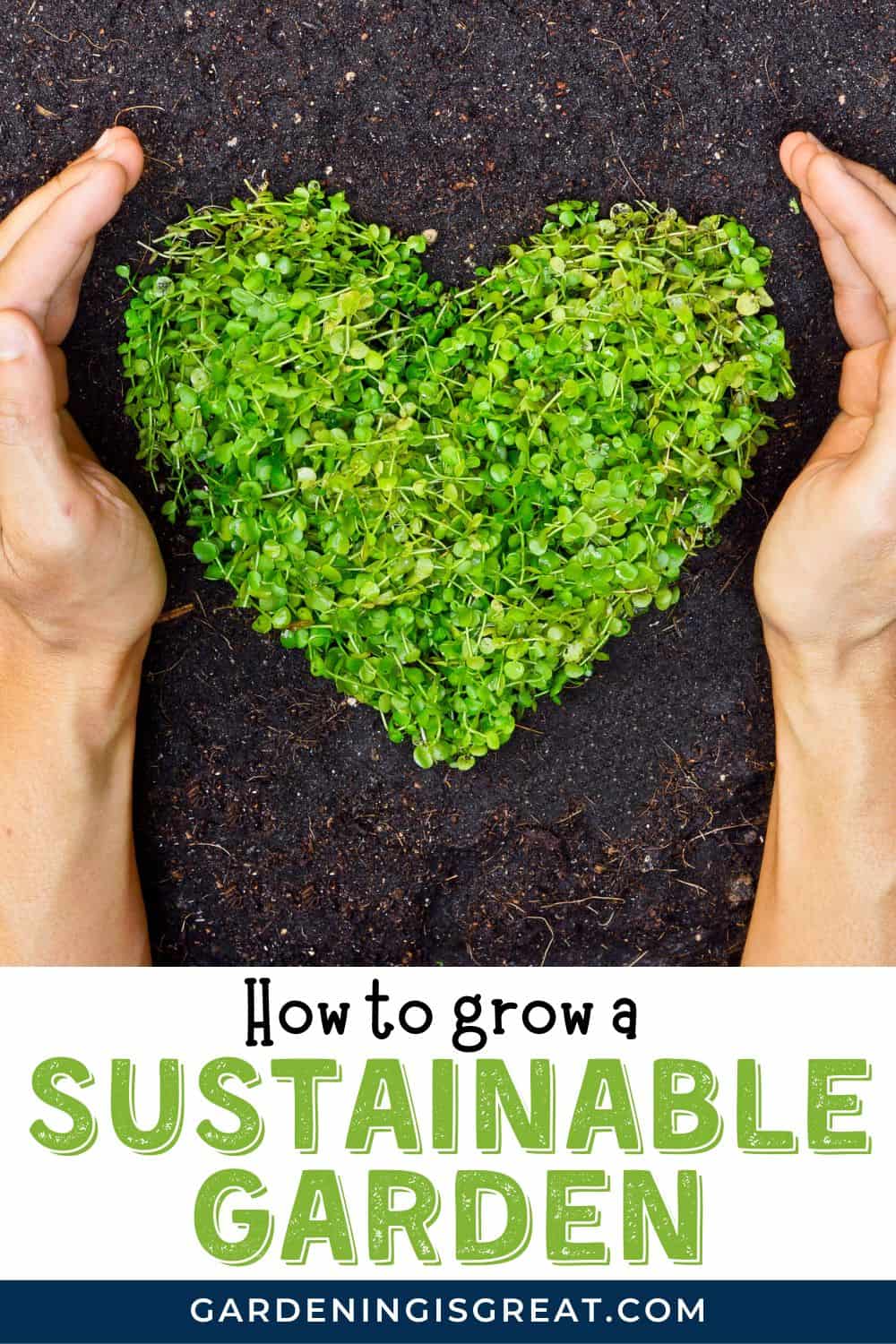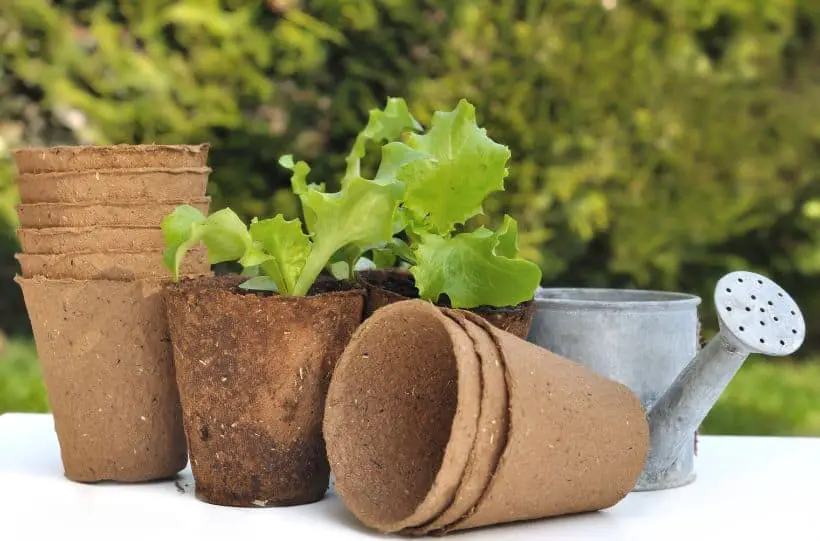How To Grow A Sustainable Garden
Living an eco-friendly and sustainable lifestyle is a choice more and more people are making to try and overcome their impact on climate change and pollution.
You mostly see ways in which people are reusing old items around the house or purchasing more eco-friendly products. However, did you know that as a gardener, you can make a substantial positive impact right from your very own garden?!
There are ways in which you too can make a difference by growing a sustainable garden. Though it might sound complicated, it’s a lot easier than you think!
With some careful planning, preparation, and research, you can create a sustainable garden that supports local wildlife and minimizes the use of plastics without compromising your outdoor space’s appearance.

So how do you grow a sustainable garden? Keep on reading to find out exactly what a sustainable garden is and some top tips to help you create your very own.
What Is A Sustainable Garden?
Sustainable gardening, simply put, is ensuring that your garden does not harm the environment or wildlife. Whilst gardening, you also make sure to be careful of what you put into the ground, the plants you grow, and your impact on the planet.
The concept also refers to a minimal use of materials and interference. If a garden is self-sustaining, it can produce new growth and gain what it needs over and over without the need for human activity.
For example, planting native flowers will benefit from the nutrients and condition of your soil. They gain what they need from rainwater, sunlight, and soil to be able to grow and produce seeds. As you have planted native flowers, they attract wildlife such as bees and butterflies. These pollinators, in turn, help to pollinate your flowers and produce even more for the following year.
All of this is achieved with the initial planting from you, and the rest is taken care of naturally. These plants are self-sustaining as they do not require intervention from you to grow and reproduce.
How Can Sustainable Gardens Help The Environment?
The whole concept of sustainable gardens is to minimize and limit their impact on the environment.
By creating a sustainable garden, you can support the environment by not using chemicals that harm the planet, reusing resources, and improving the local area.
Not only does creating a sustainable garden help the immediate environment now, but it supports it for years to come.
Here are 4 Ways to Grow a Sustainable Garden
Plant Native Plants
With improved access to exotic plants over the years, many people have chosen to plant species from other countries compared to native plants. However, this has had a profound impact on changing the habitat, condition of the soil, and even local wildlife numbers.

Non-native plants are not adapted to thrive in local areas and cause more harm than good.
Instead, consider planting native species that will save you time and money in the long run. Native species have adjusted over 100s of years to the local climate, soil condition, and environment.
Their roots are often longer, helping to strengthen the soil and improve drainage. They provide a home and food source for local wildlife. Plus, because they are native and used to local conditions, they are usually a lot easier to maintain, requiring a lot less of your time.
Use Organic Matter
Organic matter refers to natural materials to be used in gardening compared with chemicals and man-made compounds.
If you want to grow a sustainable garden, using organic matter is crucial. Organic matter is natural, can benefit the soil and living things, and can be broken down again.
Compare this with man-made gardening products such as chemical fertilizers, pesticides, and non-organic compost. These materials are unsustainable and can seriously harm or even kill local wildlife and essential micro-organisms within your soil.
Organic matter is natural and always available, meaning that it is sustainable and has no negative impact on the planet.
Research Local Wildlife
Not all plants benefit local wildlife, especially if they originated from elsewhere. Without enough native plants, wildlife can struggle to find enough food and shelter during the winter months, especially pollinators.
If you are planning to grow a sustainable garden, dedicate some time to research what wildlife is local to you and the plants they rely on to survive.
For example, flowers that bloom during February and March can help to provide essential food for pollinators early in the year when other food sources are scarce.
Plants that provide a lot of ground cover can offer hedgehogs a safe space to hibernate during the winter.
Or even planting native shrubs and trees offers food and shelter for birds.
As the plants you’ve researched will be best for the wildlife in your area, over time, they will take less effort to maintain whilst increasing the number of wildlife they attract to your garden.
Perennial Plants
Though this doesn’t seem like an important aspect of growing a sustainable garden, it will make your life a lot easier and your garden simpler.
Perennial plants are those that return year after year, often with little intervention required. Whereas annual plants only grow for one season and then require digging up and disposing of as they die at the end of the season.
The best type of plant to create a sustainable garden with is hardy perennials. Hardy perennials are
- Often the easiest to grow,
- able to thrive in many different growing conditions,
- and offer beautiful flowers that return every year.
Though they may need carefully digging up, dividing, and replanting every few years, the rest of the time, they require very little management.
Hardy perennials are easy to take care of whilst helping local wildlife.
Additional Top Tips For A Sustainable Garden
In addition to the above main aspects of being able to grow a sustainable garden, here are a few extra top tips to help you be even more eco-friendly and environmentally conscious:
1. Recycle Water
Water used to wash your hands, in the shower, or even from washing the dishes can be used directly in your garden. Known as grey water, this water makes up on average 60% of the water used inside someone’s home – and is wasted!
This water can be and is safe to be used to water your garden. Not only are you lowering the amount of water you consume, but you are recycling water that would have previously been wasted.
2. Compostable Pots
Unfortunately, many pots and especially growing containers are mostly made from plastic. Instead, try to purchase pots that are made from organic materials and will biodegrade in the soil or can be added to your compost once used.

3. Non-plastic Tools
Plastic tools are not as durable as tools made from wood or metal but are cheaper hence why many people opt for them. However, as they frequently break and cannot withstand long-term use, it works out cheaper in the long run to purchase better quality tools. These tools will last you longer and are better for the environment.
4. Compost
Producing your compost is one of the best things you can do for your sustainable garden. Not only does your compost break down items from your household, such as food waste, but that would also otherwise contribute to greenhouse gases when compacted in a landfill. Your compost also provides nutrients for your garden soil and food for microorganisms, e.g. worms.

Looking for more top tips on sustainable gardening? Take a look at these posts:

